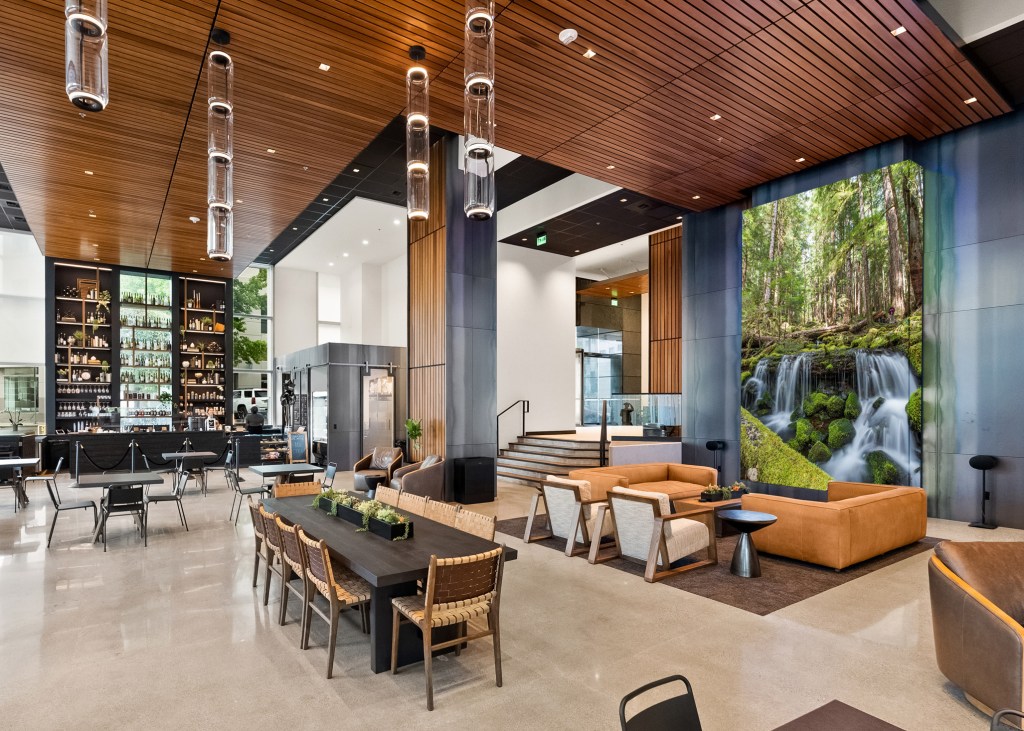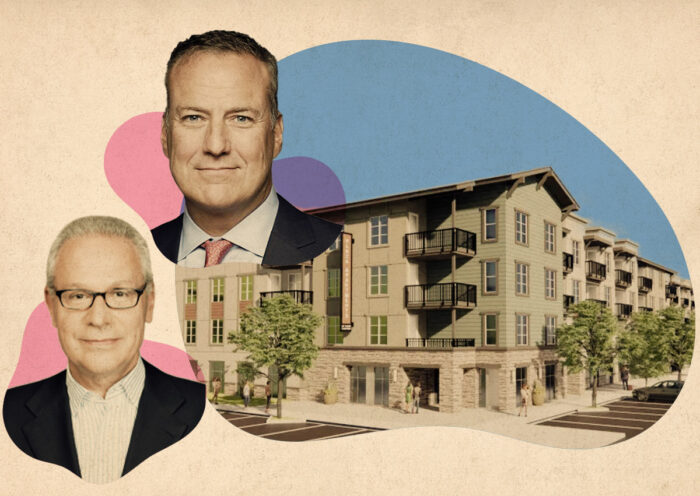Property Management Success: Attracting and Retaining Gen Z Office Workers – What is a Ground Lease?
A big part of the post-pandemic shift in office use is that workers often expect their spaces to provide many benefits of remote work, and then some. Amenity spaces, events, and food and beverage offerings all aim to outweigh the convenience of working from home.
The most appealing spaces should not be seen as a reflection of mandatory attendance, but as benefitting employees’ physical and mental well-being. The challenge of creating that atmosphere particularly applies to Generation Z, which is expected to make up 27 percent of the workforce by 2025.
What do Gen Z workers really want?
One theme of research and tenant feedback on Gen Z preferences is that these workers overwhelmingly want to be in the office, and their priorities are collaboration and professional development.
“I think that Gen Z are digital natives,” observed David Gise, senior vice president & head of hospitality and amenities at RXR. “They’re looking for integrations with tech and opportunities to connect. They’re well-educated, and (are looking for) programming geared towards professional development and opportunities to give back to the community.”
With these factors in the mix, many newly built and renovated office spaces are departing from the familiar model of rows of cubicles. At One Congress, a 1 million-square-foot downtown Boston trophy tower, Carr Properties is focusing on providing an experience akin to a hotel or luxury apartment building, and an environment that values workers’ physical and mental well-being as highly as the work they accomplish.
In developing the space, Carr “stepped back and said, ‘Office has not been innovative, in terms of embracing hospitality, creating environments where people want to be,’” Oliver Carr, the firm’s CEO, told Commercial Property Executive.
This strategy features a remodeled, hotel-inspired lobby, along with ample spaces for smaller meetings, “Our idea was to make the building not feel like an office building, and to create areas for people to have small meetings or work outside their office,” Carr said.
As an example, “if you are getting burned out working in your office all day, and you want to take your laptop to sit in a comfortable area without distractions, we have created so many spaces like that,” Carr added.
This means a coffee bar in the lobby, complete with ample seating areas for meetings, as well as restaurants and bars. Subsidized food and beverage offerings add to the appeal. “Many Gen Z office workers prefer open spaces that feel more like a coffee house (than) an office or cubicle,” noted Erin French, chief operations officer of asset services at Kidder Matthews.
READ ALSO: Has the Return-to-Office Trend Peaked?
But the hospitality-style touches go beyond the lobby into what Sage Realty CEO Jonathan Iger likes to call an experience that is “an extension of your work.” That takes the form of the Sage Experience amenity suite, which combines curated Oasis spaces, convenience services and site-specific programming, all connected through a proprietary app. To Iger, it’s a focus on “enriching the lives of people at work”—as opposed to merely offering the latest and greatest fitness center—that helps make in-person work more appealing.
For their part, the Oasis spaces, which are spread across three Midtown Manhattan buildings, combine a thematic focus with diverse seating areas, outdoor space, and options for social events and meetings. At the same time, the spaces include board rooms and conference centers. The goal is to provide an aesthetically pleasing space that gives employees freedom to work as they see fit.
In a similar approach, Kidder Matthews adopts what Executive Vice President Will Frame calls an “ecosystem that curates to the daily life of an employee.”
“For example, (there is) a lobby renovation including a café that has a relaxing work environment, a lunch option that colleagues or friends can routinely meet for a meal, and finally a bar/restaurant to host a client, friend or employee happy hour.”
Some operators take the hospitality approach even more literally. Fitness centers, are another manifestation of the hospitality focus, though there’s some disagreement about what that looks like in practice. Bromely Cos. Vice President Peter Tong sees this as an interest of Gen Z, in part informed by the company’s student housing portfolio.
The fitness spaces at 122 Fifth Ave., a 300,000-square-foot mixed-use property in Manhattan’s Union Square that underwent a $100 million repositioning, include not only traditional weight rooms and cardio equipment, but cold plunges, saunas, hyperbaric chambers and “other things that have become part of (the Gen Z) lifestyle,” Tong reported. “Maybe you stop by as part of your routine, twice a week when you are coming to the office, and this is all part of improving and enhancing your physical condition.”
Activation is everything
Of course, having nice-looking spaces is only one piece of getting a consistent Gen Z presence at your properties. Programming, and opportunities for socializing and collaboration, are equally important. As RXR’s Gise put it, “You can build beautiful spaces, but you really want them to come to life.”
Gise does this by using surveys and a tenant engagement app to directly inform program optimization. Some tenants enjoy local farmers’ markets, while others may prefer building-wide mixers.
Defining the best event is often a moving target that arises from spontaneity— something that the pandemic may have taken away from Gen Z; “We pride ourselves on these moments where tenants might come in and there is a giveaway with tenants in the lobby and there is a marketplace that they were not expecting,” Gise said.
But this does not mean offering a weekly yoga or spinning class. Iger sees the best programming as a result of leaning into what tenants in different industries want, rather than what looks best in a brochure. In his view, operators often fall into the trap of attempting to create a community within their building with amenities and programming, despite the diversity of tenants’ preferences. Law firms may not want mani-pedis, and fashion designers may not be the biggest fans of group fitness. “Keep community out of the building,” Iger advised.
The post Property Management Success: Attracting and Retaining Gen Z Office Workers appeared first on Commercial Property Executive.
In the simplest form, a ground lease is a long-term net lease (usually 49 years or 99 years) of land including any improvements on the said land. Assets that can be subject to a ground lease include but are not limited to, vacant land, office buildings, and large residential buildings.
ground lease, ground leases, net lease, ground leases 101, ground lease nyc, skyline properties, skyline properties nyc, Robert Khodadadian, investment sales, broker, commercial real estate, skyline properties, commercial real estate, NYC real estate, ground lease, Skyline Properties, Skyline NYC, Skyline Properties NYC, New York City Real Estate, ground leases, commercial buildings, apartment buildings, townhouses, mixed use investment building, mixed use user buildings, live plus income buildings, industrial properties, NYC Real Estate, Real estate investment, commercial real estate, robert khodadadian, skyline properties, ground lease, net lease, investment sales, brokerage, manhattan real estate, off market broker, daniel shirazi, Off-market real estate
Read MoreFeatured, National, News, Office, Property Management, Carr Properties, Kidder Mathews, RXR, Sage Realty Corporation, The Bromley Cos. Commercial Property Executive















